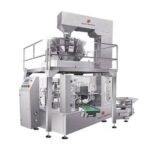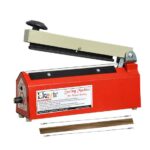The foundation of the rice processing industry is the rice milling machine, which makes it easier to turn harvested grains into the rice we consume daily. Regular maintenance is important for the longevity and optimum operation of the rice mill machinery.
There are several ways to keep your machinery in good working condition for a longer duration. In this blog post, we’ll explore six essential maintenance procedures to prolong the life of your machinery and reduce expensive downtime.
1. Regular cleaning and inspections
Managing rice mill machinery demands routine cleaning and inspection. The buildup of dust, chaff, and debris in various areas of the machinery might result in decreased performance and even breakdowns. Create a regular cleaning schedule to clear the screens, conveyors, hoppers, and other parts of the rice mill machinery.
In-depth examinations should also be carried out to spot any wear, corrosion, or damage that would need to be repaired right away. Regular maintenance will help you avoid expensive breakdowns and downtime in the long run. To guarantee that the equipment is properly maintained, it’s also critical to train employees in safety procedures and appropriate cleaning methods.
2. Lubrication
The rice mill machinery needs to be properly lubricated in order to function properly. Early breakdowns can result from excessive wear and tear caused by friction between moving elements. According to the manufacturer’s recommendations, lubricate chains, bearings, gears, and other moving parts on a regular basis. Use premium lubricants suitable for your machinery’s particular operating conditions to guarantee longevity and increased performance. Inadequate lubrication can lead to expensive repairs, higher energy usage, and decreased efficiency.
Establishing a regular maintenance program is essential to guaranteeing that all parts are well-lubricated and operating at peak efficiency. You can increase the longevity of your rice mill’s equipment and prevent unplanned downtime by spending money on high-quality lubricants and adhering to the manufacturer’s instructions.
3. Calibration and Adjustment
Calibration and adjustment are required for rice milling machinery to remain accurate and efficient. To guarantee accurate measurement and classification of rice grains, calibrate machinery including moisture meters, grain separators, and sorting machines on a regular basis. In order to maximize processing parameters and meet required quality requirements, you should also inspect and modify the settings of graders, polishers, and milling machines.
Keeping equipment properly calibrated and maintained allows rice millers to reduce waste, boost productivity, and eventually boost profitability. To maintain rice mill machinery keep functioning properly, it’s critical to plan routine maintenance checks and follow manufacturer guidelines for calibration methods. Investing time and resources in proper calibration and adjustment will pay off in the long run by producing high-quality rice products that meet market demands.
4. Material and Build Quality
The machine’s total build quality and the caliber of the materials utilized in its manufacture both affect its cost. Although they are typically more expensive, machines made of premium materials like stainless steel or strong alloys have longer lifespans and are more resistant to corrosion.
On the other hand, although initially less expensive, machines constructed of inferior materials may require more frequent maintenance and have a shorter lifespan. Low cost materials are more likely to break or need to be replaced more frequently due to wear and tear.
Precision-engineered machines with good construction are going to run more reliably and efficiently. This will increase output and decrease downtime. In the end, the cost of a machine is a direct reflection of the grade of materials used in its creation.
5. After-Sales Support and Warranty
Rice mill machinery from manufacturers with a robust after-sales support infrastructure ensures that any potential issues or maintenance needs can be promptly addressed.
Warranties not only protect your investment but also reflect the manufacturer’s confidence in the quality and reliability of their product. On-time technical support can solve problems hence optimizing machine performance.
Moreover, the availability of readily accessible spare parts ensures quick replacements and repairs, keeping your operations running smoothly without prolonged downtimes. While opting for such features may entail a slightly higher upfront cost, the long-term benefits in terms of operational efficiency, reliability, and customer satisfaction far outweigh the initial investment.
6. Monitoring and Documentation
It’s essential to keep track of the functioning of the rice mill equipment and keep thorough maintenance records. Establish a system to keep an eye on important performance metrics including throughput, energy usage, and equipment uptime. Maintain thorough maintenance logs that detail all maintenance procedures, such as inspections, repairs, and part replacements, so you can monitor the history and state of your equipment over time.
Conclusion
When considering purchasing a rice mill machine, understanding the factors that influence rice mill machine price is important. This includes machine type and capacity, brand, features and technology, market conditions and demand.
It’s essential to conduct thorough research, compare options, and consider long-term value and benefits when making a purchasing decision. By understanding the rice mill machine prices, you can make an informed choice that aligns with your budget, requirements, and business objectives.







